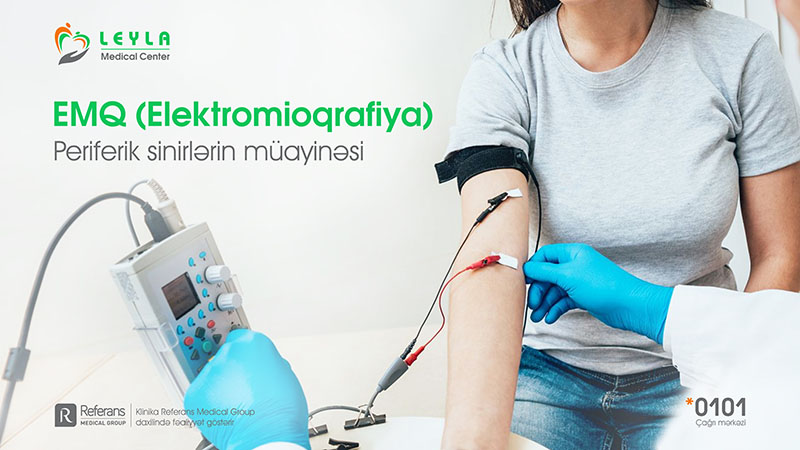
EMG (Electromyography)
- EMG is a diagnostic method used to examine diseases affecting peripheral nerves, to determine the degree of dysfunction or structural damage to peripheral nerves, to monitor the disease, and to assess the effectiveness of ongoing treatment. There are two examination methods:
- • Surface contact examination — ENMG (Electroneuromyography)
- • Needle EMG
- Patient complaints:
- • In the upper or lower limbs:
- o Sensation of numbness
- o Paresthesia (tingling sensation)
- o Contractures
- o Decreased muscle strength
- o Muscle hypotrophy or atrophy
- o Burning sensation
- When EMG is performed:
- • For spinal cord diseases associated with muscle weakness, such as Amyotrophic Lateral Sclerosis (ALS)
- • For nerve injuries, such as nerve transection
- • For diseases related to nerve compression, for example, carpal tunnel syndrome
- • For herniated discs in the lumbar and cervical spine
- • For diseases negatively affecting nerve function, such as diabetes, kidney diseases
- • For neuromuscular complex diseases such as myasthenia gravis, Guillain-Barré syndrome, myopathy, and others.
28 May 2022
Loading...